To Live and Die in L.A. Blu-ray Movie
HomeTo Live and Die in L.A. Blu-ray Movie 
Blu-ray + DVDMetro-Goldwyn-Mayer | 1985 | 116 min | Rated R | Feb 02, 2010
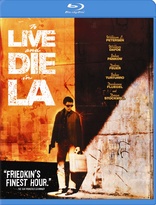
Movie rating
7.8 | / 10 |
Blu-ray rating
| Users | 4.3 | |
| Reviewer | 3.5 | |
| Overall | 3.8 |
Overview
To Live and Die in L.A. (1985)
When his partner is murdered just days before retirement, Secret Service Agent begins an obsessive hunt for the killer counterfeiter and all-round psychopath.
Starring: William Petersen, Willem Dafoe, John Pankow, Debra Feuer, John TurturroDirector: William Friedkin
| Drama | Uncertain |
| Crime | Uncertain |
| Film-Noir | Uncertain |
| Thriller | Uncertain |
| Action | Uncertain |
Specifications
Video
Video codec: MPEG-4 AVC
Video resolution: 1080p
Aspect ratio: 1.85:1
Original aspect ratio: 1.85:1
Audio
English: DTS-HD Master Audio 5.1 (48kHz, 24-bit)
French: Dolby Digital 5.1
Spanish: Dolby Digital 2.0
Subtitles
English, Spanish, Korean, Mandarin (Traditional)
Discs
50GB Blu-ray Disc
Two-disc set (1 BD, 1 DVD)
DVD copy
Playback
Region free
Review
Rating summary
| Movie | 3.5 | |
| Video | 3.5 | |
| Audio | 3.5 | |
| Extras | 2.5 | |
| Overall | 3.5 |
To Live and Die in L.A. Blu-ray Movie Review
Lives by its action, dies by its cop movie clichés.
Reviewed by Casey Broadwater February 6, 2010To Live and Die in L.A. occupies a strange place in director William Friedkin’s wildly uneven canon. After back-to-back success with The French Connection and The Exorcist, two films that still feel unconfined by their respective genres, Friedkin was seen as a talented fixture in the New Hollywood establishment. But then came a string of creative, critical, and financial failures—including Sorcerer, a big-budget remake of French director Henri-Georges Clouzot’s 1953 thriller, The Wages of Fear—that had him on the outskirts for over a decade. In 1985, with the release of To Live and Die in L.A., Friedkin seemed to be making a triumphant return to the cops and criminals genre that first made him famous. And while the film was a modest hit, and would go on to find cult status on home video, it was only a stopgap for Friedkin, whose subsequent films, with the minor exception of 2007’s pyscho-horror freakout Bug, have been largely forgettable. (Was anyone else surprised when Lionsgate announced Jade for an April, 2010 Blu-ray release?) Live and Die finds Friedkin briefly recapturing some of the magic of The French Connection, but shake away the film’s peculiarities and it’s nothing more than a dated, good-cop-gone-bad caper with a tense but long- since surpassed car chase.
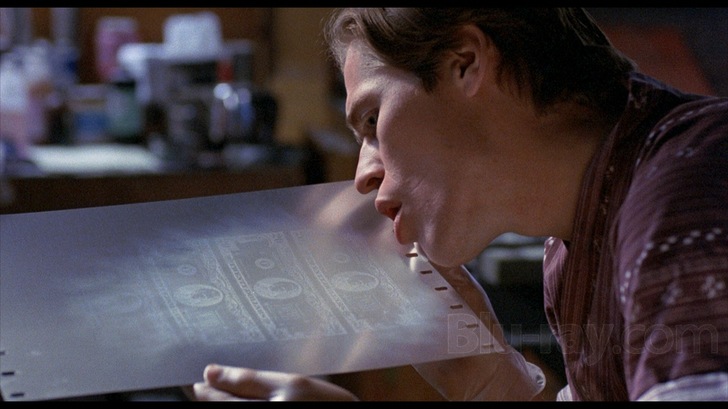
Willem Defoe blows...
The set-up is pure cop movie cliché, a pile of genre chestnuts that have gone seriously stale in the 25 years since the film’s release. Richard Chance (C.S.I.’s William Petersen) is a young buck Secret Service agent whose partner, Jimmy (Michael Greene), is three days away from retirement. (“I’m too old for this shit,” says Jimmy after foiling a terrorist attack that opens the film but has nothing whatsoever to do with the plot.) What are the odds that something’s going to happen to Jimmy in those three days, prompting Chance to go on a quest for vengeance? If you know anything about 1980s cop dramas, pretty good odds. While investigating a lead into a counterfeiting operation, Jimmy gets straight up capped in the face, the first of several characters to get a bullet right between the eyes. (Seriously, the film has a surfeit of gory facial squibs.) This totally sets off Chance, a base-jumping adrenaline junkie who doesn’t play by the rules and isn’t afraid to go outside the law. He’s the stock rogue cop, a hardheaded S.O.B. who’s dead set on catching his man, no matter what it takes. That man is Rick Masters (Willem Defoe), an artist-turned-counterfeiter who, in a bit of heavy handed foreshadowing, is introduced to us while setting fire to one of his self-portraits. With the reticent help of his new partner, John (John Pankow), Chance goes to increasingly more dangerous and illegal lengths to catch Masters, eventually blurring the demarcation between cop and criminal.
This is the film’s central conceit: at what point in Chance’s quest for vigilante justice does he stop being a quote-unquote good guy? And is his well-meaning partner John fated to follow down this dark path simply because he’s complicit? The film eschews the tidy morality of conventional cop dramas—or buddy cop comedies, for that matter—but Chance isn’t complex or likeable enough as an anti-hero to sustain our sympathy. He’s a total tool, to put it mildly, an unrepentant misogynist who, at one point, tells his hard-up-for-cash girlfriend and live-in informant (Darlanne Fluegel), “If you want bread, f—k a baker.” (This film is filled with similarly pithy one-liners. Another character says, “If you’re looking for a pigeon, go to the park.”) Both William Petersen and John Pankow are well suited for their roles, but the script’s laughable tough-guy dialogue pushes their performances into undeniably hammy territory. I kept imagining someone making a parody starring SNL’s Chris Parnell as Chance and Ben Stiller as John. Better is Willem Defoe, who gets by on the creepy amphibian quality of his expressions, saying more with a stare from under his prominent brow than can be done justice with mere words. The surrounding cast is a shortlist of 1980s indie all-stars, including John Turturro, Robert Downy Sr., and Dean Stockwell, hot off his performance in Paris, Texas and shortly before his unsettling turn as an effeminate pimp in David Lynch’s Blue Velvet.
Unfortunately, the film also plays host to a few less-welcome fixtures from the ‘80s, like the brash electronic score from one-hit wonders Wang Chung. On the back of the film’s soundtrack album, Friedkin is quoted as saying, “What they finally recorded has not only enhanced the film, it has given it a deeper, more powerful dimension.” Really? Music from the ‘80s has made a bit of a resurgence lately, but not this kind of music, which sounds like the intro for a short- lived Reagan-era sitcom. Friedkin also indulges himself with a scene of “modern” dancers— dressed in unitards and capes and all dolled up with glittery New Wave makeup—Wang Chunging it all over the dance floor, looking more than a little ridiculous. Were people on cocaine in the ‘80s or what? Oh, that’s right, they were.
Friedkin makes less of an embarrassment of himself when he lays off the kookiness and puts on his action director’s hat. The French Connection rivaled Steve McQueen’s Bullitt in terms of revolutionizing cinematic auto stunts, and Friedkin had to know that if he was going to do a chase in To Live and Die in L.A. it would have to be ante-upping to the nth degree. And surprisingly, it is. The director has his protagonist speeding the wrong direction down an L.A. freeway, and he even shows it wide, with none of the quick cutting and distraction that would be used in a more contemporary action film. That said, viewers raised on The Matrix and Bourne trilogies will be less than awed, but for the time, this was cutting edge stuff. Friedkin has always been a technically capable filmmaker, even when his storytelling abilities have suffered, a trait that’s never more evident than in Live and Die. One of the film’s more impressive sequences is a montage of Masters making plates and printing his phony dough. To wear in the newly minted cash he tosses it into a dryer with a bunch of poker chips— using symbolic money to age fake money meant to pass as real money. It’s a small touch—it doesn’t mean anything or lead anywhere—but it feels resonant somehow. And this is indicative of the entire plot, which has some nuanced beats and unforeseen twists, but ends on a moment as bogus as a three-dollar bill.
To Live and Die in L.A. Blu-ray Movie, Video Quality 
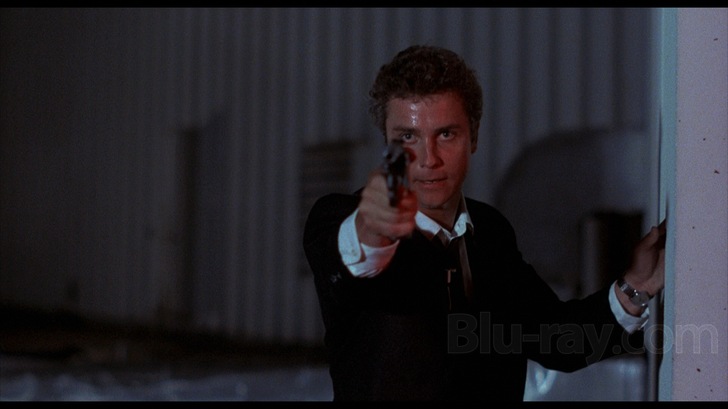
To Live and Die in L.A. makes its first U.S. appearance on Blu-ray with a good but never great 1080p/AVC-encoded transfer that makes a modest improvement over the DVD, a copy of which is also included with this release. The 1.85:1 framed image has a softened-with-age look that's characteristic of the film's time period. Even in tight close-ups most fine detail goes unresolved, leaving textures indistinct and background objects hazy around the edges, even when they are in focus. Compared to Criterion's recent renovation of Paris, Texas—a film from the same era that was also shot by cinematographer Robby Muller—To Live and Die in L.A. has a blander, flatter appearance throughout. Colors are very natural—there's no stylization here at all— and aside from the strong red and green lighting inside a strip club, there's nothing that stands out as particularly vivid. Neither are the colors wishy washy, however, which is something that I can't say for the film's inconsistent black levels. Sometimes murky, sometimes deep, sometimes gray— daylight scenes look best but nighttime interiors suffer frequently under crushed shadows. A heavy spackling of grain buzzes over the image, with additional noise joining the mix during some of the darker sequences. Aside from some minor color pixilation I didn't spot any overt technical troubles through, and there's none of the pesky edge enhancement that plagues the DVD.
To Live and Die in L.A. Blu-ray Movie, Audio Quality 
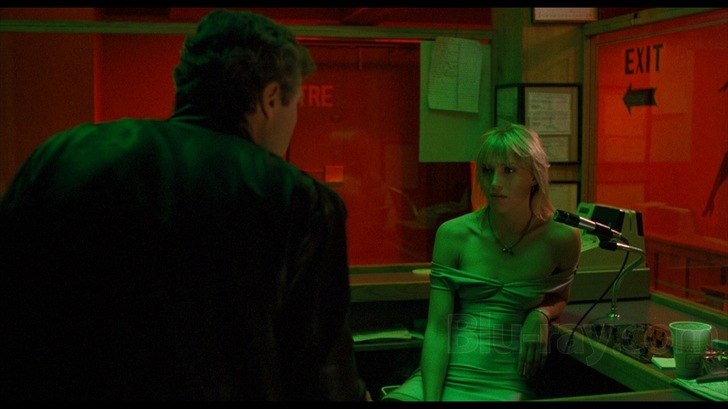
My feelings are conflicted on the film's DTS-HD Master Audio 5.1 surround track. On one hand, the mix is much more engaging than I had expected it to be, especially for a film that was shot before multi-channel mixing was the norm. Ambience fills out the soundfield when called for, giving us crackling embers, barroom chatter, and L.A. traffic congestion, while channel movements are less than impressive but at least present, with cars, trucks, and trains all roaring through the rear speakers with relative frequency. On the inevitable other hand, however, the track seems brittle dynamically. Bass response is flat, the mid-range sounds slightly squashed, and the high end is at times cringingly brash. Just try to listen to Wang Chung's piercing electro-snare hits or the mechanical clatter of Master's printing press without either wincing or turning the volume down. Dialogue is properly prioritized, though, and aside from a few obvious ADR moments, everything sounds natural and convincing. All in all, the films both sounds its age and doesn't sound its age, if that makes sense.
To Live and Die in L.A. Blu-ray Movie, Special Features and Extras 
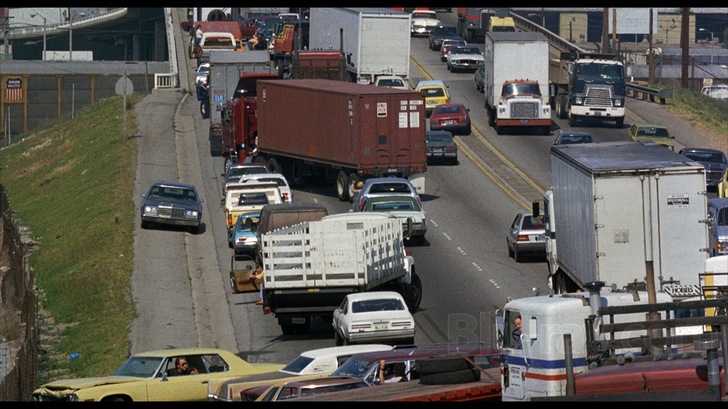
Okay, prepare to be mildly annoyed. This release of To Live and Die in L.A. recycles all of the bonus material from the 2003 DVD, but instead of being ported over to the Blu-ray disc—which includes only a Theatrical Trailer (1080p, 2:06)—the material was kept right there on the included DVD, where it's always been. If you want to check out any of the supplements, you've got to swap discs. And this is especially obnoxious if you want to listen to William Friedkin's excellent commentary track—you'll have to watch the film again, but in standard definition. The DVD also includes Counterfeit World: The Making of To Live and Die in L.A. (SD, 29:51), a typical but informative documentary with lots of interviews, production stills, and B-roll footage, as well as an Alternate Ending Featurette (SD, 8:40), a Deleted Scene Featurette (SD, 4:26), and a Still Gallery that contains around 60 photos. You can also choose to watch Alternate Ending Only and Deleted Scene Only, but since this footage is already included at the end of each featurette, I don't really see the point.
To Live and Die in L.A. Blu-ray Movie, Overall Score and Recommendation 
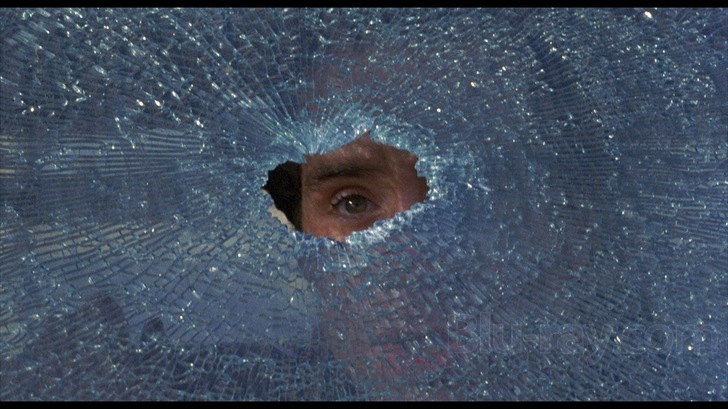
Someone broke the freshness seal on To Live and Die in L.A. and the film is way past its expiration date. There are splotches of 1980s mold all over the thing, but if you're willing to eat around the fuzzy patches, there's a decently filling cop drama to be had. Personally, I can't get into it—too many clichés, too much forced dialogue—but I can understand why the film's fans like it. If you're one of them, you'll probably be satisfied but not wowed by the audio/video presentation on Blu-ray, and it's more than likely that you'll be annoyed by having to swap discs to watch the supplementary features. Is the upgrade worth it? It's a trade-off, really, but if you like the film, I'd say pick up the Blu-ray and sell your old DVD copy—there's one included anyway.
Other editions
To Live and Die in L.A.: Other Editions

To Live and Die in L.A.
1985

To Live and Die in L.A.
Collector's Edition
1985

To Live and Die in L.A. 4K
1985

To Live and Die in L.A.
4K Restoration
1985
Similar titles
Similar titles you might also like

Drive
2011

Thief 4K
Director's Cut
1981

Nightcrawler
2014

A Most Violent Year
2014

The Enforcer
The Dirty Harry Collection
1976

50 Dead Men Walking
Fifty Dead Men Walking
2008

Shaft's Big Score!
Warner Archive Collection
1972

Blackhat 4K
Limited Edition
2015

Killer's Kiss 4K
1955

King of New York
1990

Hollywood Story
1951

Bullitt
1968

Collateral 4K
2004

The Big Heat 4K
1953

The Long Goodbye
4K Restoration
1973

The Driver
Limited Edition to 3000 - SOLD OUT
1978

Sudden Impact
The Dirty Harry Collection
1983

The French Connection
Filmmakers Signature Series | Remastered
1971

711 Ocean Drive
1950

Black Rain
1989